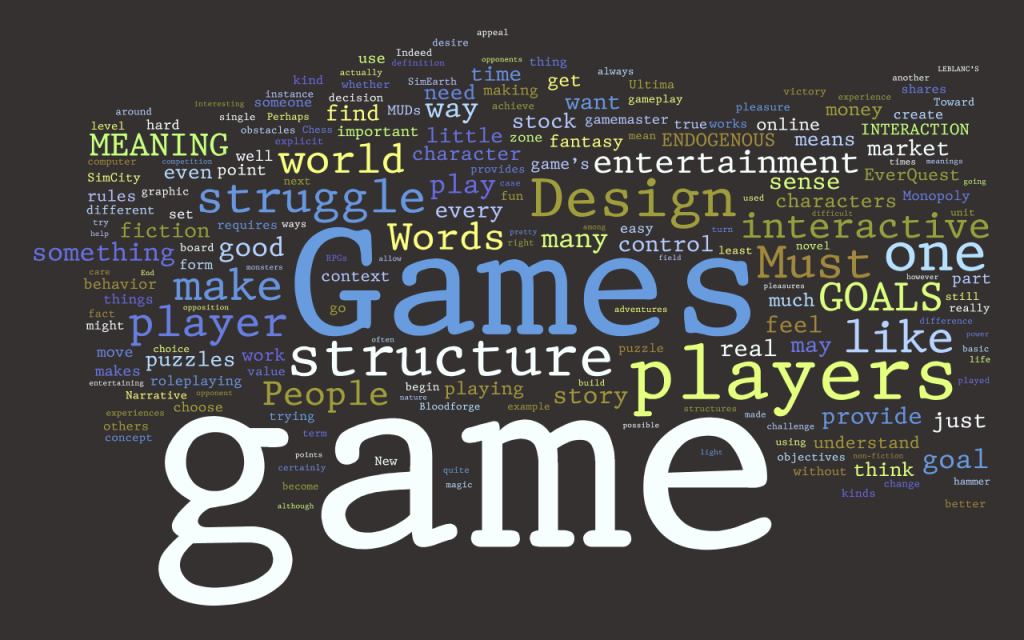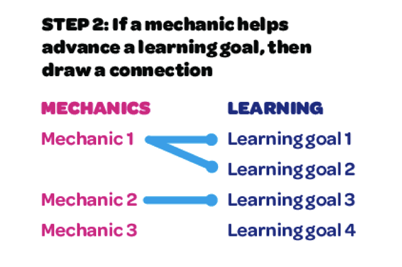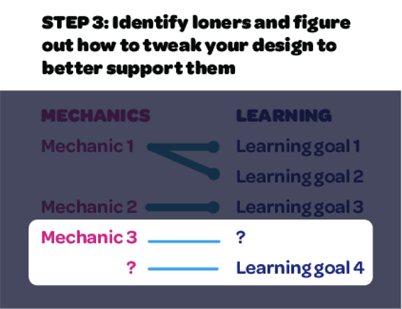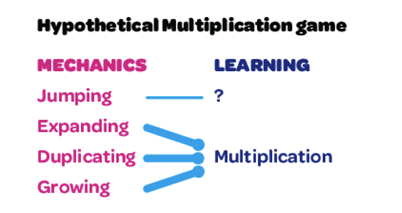
Brendon Trombley stresses that learning game developers must focus on core game mechanics to succeed.
Learning games have it rough. Non-learning games are designed around a single primary goal: player enjoyment. That can be challenging enough to accomplish, but learning games have two primary goals: enjoyment plus learning.
This can feel like a struggle. Often, it seems like learning and fun are diametrically opposed ideas, dooming learning games to be either boring or ineffective. However, there are learning games out there that are fun while producing real learning. What’s the difference?
The primary source of fun in a game is through the core mechanics – that is to say, the actions players repeatedly take while playing. An easy way to understand core mechanics is to think of them as the verbs of the game: jumping, bluffing, or trading, for example. Simply by playing, players acquire skill in these verbs through repeated practice. Therefore, good learning games are the ones in which the verbs of play are intrinsically linked to the intended learning outcomes. It follows that bad learning games keep them separate.
Imagine a learning game with a fun mechanic such as jumping, and at the end of each level you must solve a multiplication problem to continue. This is an example of bad integration between the mechanics and the learning. There’s no relationship between the jumping mechanic and multiplication, so the experience feels like fun being repeatedly interrupted by math. Instead, for multiplication, a better-matched mechanic might be expanding, duplicating, or growing. These are verbs which lend themselves to the idea of multiplication.
By focusing on the relationship between core mechanics and learning, we can estimate the effectiveness of a learning game by identifying the linkages between them. Here is a strategy you may find helpful in laying out and analyzing this information:
Step 1: Make a diagram with a mechanics column on the left and learning on the right. List the actions players take in the left column, such as jumping, bluffing, trading, or any other physical or mental actions. Then list all the learning goals on the right that are (or should be) part of the game. These could be skills, modes of thinking, deep understandings, or pieces of knowledge.

Step 2: Now, ask yourself this question about each mechanic: When players perform this action, is it advancing them along any of the learning goals? If so, draw an arrow from left to right connecting the mechanic to the learning goal. Optionally, you could use different line thicknesses to show the strength of the linkage.

Step 3: Consider the distribution of arrows between the columns. Which items have many linkages? Which don’t? If you have many arrows linking items, it’s probably a solid learning game. If you have loners, that may indicate the game needs tweaking. From the above diagram, we might conclude that Mechanic 3 and Learning Goal 4 are weak areas and we should tweak or reinvent Action 3 to connect it to Learning goal 4.

Here’s an example of this technique applied to our hypothetical example from before. Keep in mind that it takes thoughtful game design to truly connect a mechanic to a learning goal; it’s not automatic. That said, you can see how jumping leads to no solid learning goal here, while expanding, duplicating, and growing, all lead to multiplication.

In future posts, we will use this strategy to deconstruct various real learning games, both good and bad.
Looking for help or advice on your learning game? Get in touch!
This post is part of a series, and originally appeared at Institute of Play.
